A standard 1970 nickel is worth $0.20-$0.40, but error coins can reach $10,000. The 1970-D nickel’s value increases with repunched mint mark errors (RPMs), worth $10-$50 depending on condition. The 1970-S nickel in high grades (MS60+) ranges from $20-$60, while MS Full Steps examples command $110-$3,750. Key errors to check include repunched mint marks below the date on 1970-D coins and doubled die reverses on 1970-S coins showing doubling on “5 Cents” or “Monticello”. The rare 1970-D SMS variety could exceed $10,000. Professional grading is essential to distinguish valuable error coins from standard circulation pieces worth only face value.
That Jefferson nickel from 1970 sitting in your change jar might be worth more than five cents. While most circulated examples trade for only $0.20 to $0.40, certain error varieties and high-grade specimens can command anywhere from $50 to an astonishing $10,000. The key lies in understanding which mint marks and errors to look for, and knowing how to spot them on your coins.
Understanding the 1970 Nickel Production
The United States Mint produced Jefferson nickels at three facilities in 1970: Philadelphia (no mint mark), Denver (D), and San Francisco (S). Philadelphia struck the largest quantity at 515,485,380 pieces, primarily for general circulation. Denver produced 241,464,814 nickels, while San Francisco’s output focused on proof coins for collectors. This massive production means most 1970 nickels remain common, but specific varieties within these mintages have become highly collectible due to minting errors or exceptional preservation.
The composition remained standard for this era: 75% copper and 25% nickel, weighing 5 grams with a diameter of 21.2 millimeters. Understanding which facility produced your coin becomes the first step in determining its potential value, as each mint created distinct error varieties worth different amounts.
The 1970-D Nickel: Repunched Mint Mark Varieties
Denver-minted nickels from 1970 contain the most accessible error variety for collectors: the repunched mint mark. This occurs when the mint mark punch struck the working die multiple times in slightly different positions, creating a doubled or offset appearance of the “D” below the date on the coin’s obverse.
Several repunched varieties exist for 1970-D nickels, each with different characteristics. The most dramatic examples show clear doubling where a second “D” appears tilted or shifted from the primary mint mark. Some varieties display a partial letter beneath or beside the main “D,” while others show just a thickening or spreading of the letter’s lines.
1970-D Nickel Value by Grade:
| Condition | Standard Coin | Repunched Mint Mark |
|---|---|---|
| Good (G-4) | $0.05 | $8-$12 |
| Fine (F-12) | $0.10 | $12-$18 |
| AU-50 | $0.25 | $10-$15 |
| MS-60 | $0.40 | $25 |
| MS-65 | $2-$5 | $50 |
To identify a repunched mint mark, examine the “D” below the date using a 10x magnification loupe. Look for doubling, extra serifs, or portions of a second letter visible around the primary mint mark. The clearer and more dramatic the repunching, the higher the premium collectors will pay. A standard circulated 1970-D nickel without errors remains worth only slightly above face value, but that same date with a strong repunched mint mark in MS-65 condition reached $50 at Heritage Auctions in 2022.
The 1970-S Nickel: Full Steps and High-Grade Specimens
San Francisco nickels from 1970 primarily came from proof sets sold to collectors, though some circulation strikes exist. The value proposition for 1970-S nickels centers on condition rather than dramatic errors. Collectors particularly prize specimens with “Full Steps” designation, referring to the complete, unbroken horizontal lines on Monticello’s steps on the reverse.
Achieving Full Steps requires exceptional striking pressure and die quality. Most nickels show some weakness or merging of these step lines, even in high grades. Professional grading services like PCGS and NGC designate coins with at least five or six complete, unbroken step lines as “FS” or “5FS/6FS.” This designation dramatically increases value for 1970-S nickels.
1970-S Nickel Value Chart:
| Grade | Standard Strike | Full Steps (FS) |
|---|---|---|
| MS-60 | $0.50-$1 | $20-$30 |
| MS-63 | $2-$4 | $40-$60 |
| MS-65 | $8-$15 | $110-$250 |
| MS-66 | $25-$40 | $400-$800 |
| MS-67 | $60-$120 | $1,200-$3,750 |
According to Greysheet pricing data from 2023, a 1970-S nickel in MS-67 condition with Full Steps designation sold for $3,750 through a major auction house. The same grade without Full Steps brought only $120. This dramatic difference illustrates why careful examination of step definition matters enormously for San Francisco nickels.
Doubled die reverse varieties also exist for 1970-S nickels, though they’re significantly rarer than the repunched mint marks on Denver issues. These show doubling on “MONTICELLO,” “FIVE CENTS,” or other reverse design elements. Examples with strong doubling visible to the naked eye command $100 to $500 depending on grade and doubling strength.
The Ultra-Rare 1970-D SMS Nickel
The most valuable 1970 nickel variety is the “SMS” or Special Mint Set strike from Denver. In 1970, the Mint officially discontinued Special Mint Sets, which had been produced from 1965 to 1967 as a substitute for proof coins. However, a small number of 1970-D nickels were struck using SMS dies and procedures, creating coins with characteristics between circulation strikes and proofs.
These SMS specimens exhibit sharper details than regular strikes, with squared rims and superior luster. The surface shows a satiny finish distinct from both circulation strikes and mirror-like proofs. Experts estimate fewer than 10 genuine 1970-D SMS nickels exist, making them among the rarest Jefferson nickel varieties.
A certified 1970-D SMS nickel in MS-67 condition sold for $10,200 in a 2021 Heritage Auctions sale. Another example graded MS-66 brought $8,400 in 2019. Authentication is critical, as regular high-grade 1970-D nickels sometimes get confused with SMS strikes. Only purchase certified examples from PCGS or NGC that specifically designate the SMS variety on their holders.
How to Examine Your 1970 Nickels for Errors
Start by sorting your 1970 nickels by mint mark. Philadelphia coins show no mint mark below the date, Denver coins display a “D,” and San Francisco pieces show an “S.” Use a magnifying glass with at least 10x magnification for detailed examination.
For 1970-D nickels, focus on the mint mark itself. Position the coin under good lighting and rotate it slightly while observing the “D.” Repunched varieties show extra thickness, doubling, or ghost images of additional letter portions. Compare your coin to images of known repunched varieties online to identify which specific variety you might have. The Wexler Die Variety files catalog multiple 1970-D repunched mint mark varieties with different characteristics.
On 1970-S nickels, examine Monticello’s steps on the reverse. Count the horizontal lines on the building’s front stairs. You’re looking for complete, unbroken lines running from left to right across all six steps. Most nickels show weakness or merging where the lines should separate. Full Steps examples display sharp, distinct separation with no breaks or weakness. Even one weak step disqualifies the coin from FS designation.
Also check reverse lettering on both D and S mint marks for doubling. Doubled die reverses show slight to obvious doubling on “MONTICELLO,” “FIVE CENTS,” “E PLURIBUS UNUM,” or “UNITED STATES OF AMERICA.” The doubling appears as a second, slightly offset impression of the letters.
Getting Your 1970 Nickel Professionally Graded
Once you identify a potential error or high-grade specimen, professional grading confirms its authenticity and condition. The two major grading services, Professional Coin Grading Service (PCGS) and Numismatic Guaranty Company (NGC), both authenticate and grade Jefferson nickels. Grading costs typically range from $20 to $50 per coin depending on service level and turnaround time.
Grading makes economic sense when your coin’s potential value exceeds $100. For example, a 1970-D nickel with a strong repunched mint mark in apparent MS-65 condition should be graded, as certification could confirm a $50 value versus the $0.40 raw coin value. Similarly, any 1970-S nickel that appears to have Full Steps and grades MS-65 or higher deserves professional authentication given values starting at $110.
The grading process involves expert numismatists examining your coin under magnification to assess wear, strike quality, luster, and any impairments. They assign a numerical grade from 1 to 70, with higher numbers indicating better condition. The coin is then sealed in a tamper-evident holder with a label showing the grade, variety designation, and certification number. This “slabbing” protects the coin and provides buyers confidence in its authenticity and grade.
For 1970-D SMS candidates, authentication becomes even more critical given the $8,000 to $10,000 value range. Submit any suspect SMS coins through the standard service level with a note requesting careful authentication of the variety. False positives occur frequently, as high-grade regular strikes can superficially resemble SMS coins to inexperienced eyes.
Where Collectors Buy and Sell 1970 Nickels
The market for 1970 nickel errors and high-grade specimens operates through several channels. Major auction houses like Heritage Auctions, Stack’s Bowers, and GreatCollections regularly feature Jefferson nickel varieties in their sales. These venues work best for coins valued over $500, where auction exposure reaches serious collectors willing to pay premium prices.
For coins in the $50 to $500 range, online marketplaces like eBay provide active trading venues. Search completed listings to gauge recent sale prices for specific varieties and grades. Exercise caution purchasing raw (uncertified) coins, as photographs can hide problems or misrepresent condition. Certified coins in PCGS or NGC holders offer more security for online transactions.
Local coin shops and coin shows offer opportunities to sell or buy in person. Dealers typically pay 50% to 70% of retail value when buying, as they need profit margin for resale. Shows provide access to multiple dealers and collectors, often resulting in better prices than single dealer offers. Bring your certified coins to show dealers the professional grade rather than relying on their assessment of raw coins.
Start Checking Your Change Today
Every 1970 nickel deserves a second look before spending. Focus your search on Denver mint marks with repunched characteristics and San Francisco pieces with sharp step details. The 10 minutes spent examining each coin could uncover a $50 repunched mint mark variety or even rarer finds. Sort your nickels by date and mint mark, then use a magnifying glass to check each 1970 example carefully. Even common dates might hide valuable errors that transform pocket change into significant discoveries. Keep a reference guide handy showing known varieties, and consider joining online coin collecting forums where experienced collectors help identify potential errors and rarities.
You may be interested:
- 1859 Indian Head Penny Coin Value Complete Errors List And No Mint Mark Worth Guide For Collectors
- 1911 V Nickel Coin Value Guide Complete Errors List And No Mint Mark Worth Today
- 1902 Dime Coin Value Complete Errors List With O S And No Mint Mark Worth Guide
- 1788 Quarter Coin Value Complete Guide Errors List And D S P Mint Mark Worth Revealed
- 1776 To 1976 Bicentennial Half Dollar Coin Value Complete Errors List And What Your D S And No Mint Mark Coins Are Actually Worth
- 1990 Penny Coin Value Errors List How D S And No Mint Mark Pennies Are Worth Thousands Of Dollars

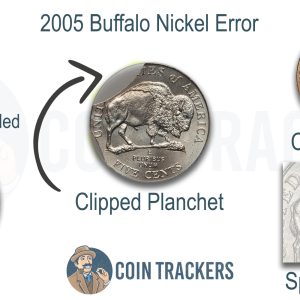
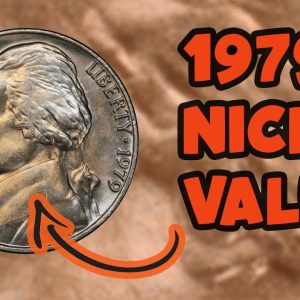
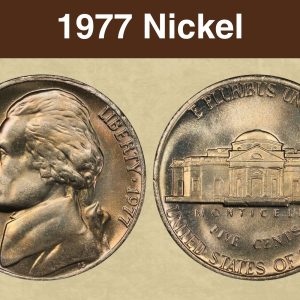
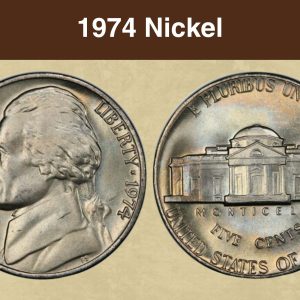
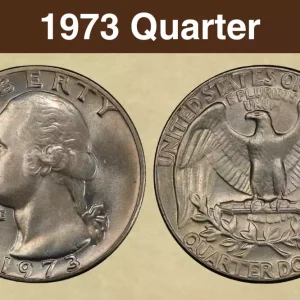
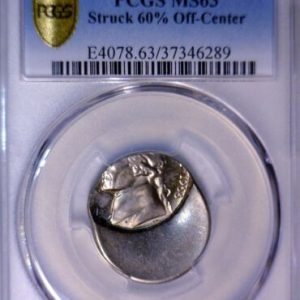
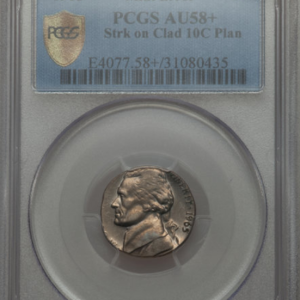
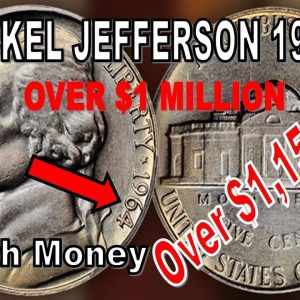
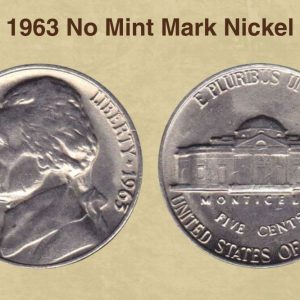
What is the error on the 1970 nickel?
Common 1970 nickel errors include misplaced mint marks (especially the Denver “D”), double strikes, clipped planchets, and coins struck on the wrong planchet, such as a dime or penny. Some controversial errors involve a “misplaced mint mark” on multiple coins, while more rare and valuable errors can involve coins struck from heavily clashed dies or those struck multiple times with a high degree of off-center strike. The value of these errors depends on the specific error, the coin’s condition…
Which 1970 nickels are worth money?
A 1970 nickel’s value depends on its condition, mint mark, and features. Most circulated 1970 nickels are only worth face value ($0.05), but uncirculated coins can range from a few cents to thousands of dollars for rare examples like those with “full steps” (clearly defined steps on the reverse). A 1970-S with “full steps” in high-grade condition is particularly valuable, with some rare specimens fetching thousands of dollars at auction.
What Jefferson Nickel is worth over $10000?
#1: 1964 SMS : >$15,000 IN MS65 This Jefferson Nickel can easily fetch over $10,000. Only 40 of these coins are known to exist in the whole world. They’re not error coins; rather, they are a Special Mint Set (SMS) that the mint never released to the general public.